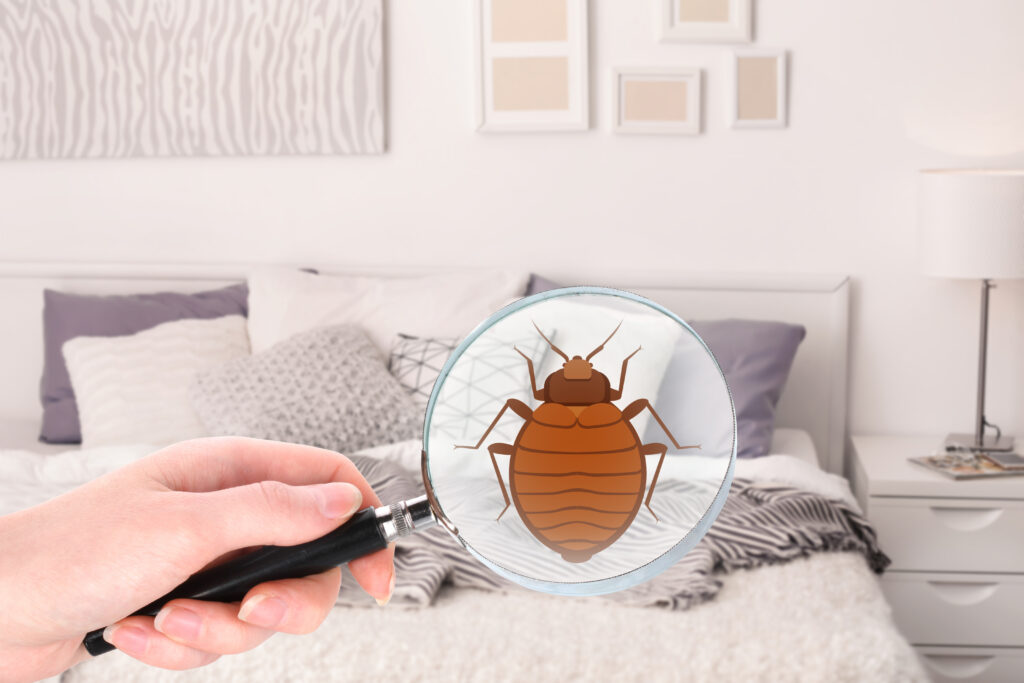Efficient A1 Bed Bug Treatment Houston - Eliminate Bed Vermin
Efficient A1 Bed Bug Treatment Houston - Eliminate Bed Vermin
Blog Article
Comprehending the Lifecycle of Parasites for Targeted Control Strategies
Understanding the lifecycle of bugs is an essential element of efficient insect monitoring methods. By comprehending the different stages of advancement that parasites go through, a more exact and targeted approach can be embraced to manage their populations. This knowledge not only drops light on the vulnerabilities within the insect lifecycle yet also paves the method for executing calculated measures that can interrupt their growth and recreation cycles. Through a deeper understanding of just how pests flourish and evolve, tailored control approaches can be designed to resolve specific factors in their lifecycle, eventually leading to more effective bug administration outcomes.
Value of Understanding Pest Lifecycle
Understanding the lifecycle of parasites is vital for establishing effective and targeted control strategies in parasite monitoring. By understanding the various stages a bug goes with from egg to adult, insect control experts can identify susceptible points in the lifecycle where treatment can be most effective.
Furthermore, recognizing the details environmental conditions required for every stage of the parasite's lifecycle can lead decisions on habitat alteration or exemption techniques to lower and interfere with the lifecycle insect populaces. This expertise makes it possible for pest management experts to apply positive procedures instead of depending solely on reactive treatments, causing more lasting and long-lasting pest control remedies. Eventually, a detailed understanding of pest lifecycles equips bug control professionals to tailor their approaches successfully, decreasing ecological impacts and taking full advantage of control end results.
Key Phases in Pest Growth
To properly implement targeted control methods in bug management, an essential aspect depends on comprehensively recognizing and recognizing the vital stages in bug development. Insect growth typically contains several vital stages that are essential for their lifecycle and administration. The very first stage is the egg stage, where bugs lay eggs that later on hatch right into larvae. Larvae after that progress into pupae, a phase where they undergo transformation before arising as adult parasites. Comprehending these stages is important as it aids in determining weak spots in the lifecycle where control steps can be most reliable.

Vulnerabilities in Parasite Lifecycle
Throughout the different phases of an insect's lifecycle, distinctive susceptabilities emerge that can be tactically targeted for efficient control procedures (A1 bed bug removal houston). One important susceptability exists in the egg stage, where bugs are typically extra susceptible to certain insecticides or organic control agents due to their soft outer shell, making them less complicated targets for intervention. Understanding these susceptabilities in the parasite lifecycle is essential for developing accurate and efficient control strategies that successfully take care of insect populaces while reducing ecological impact.
Executing Targeted Control Steps

Executing targeted control measures generally entails a multi-faceted method. This may consist of habitat adjustment to make the environment less hospitable to bugs, such as eliminating standing water for insect control or sealing entrance factors for rats. In addition, biological control techniques can be used, where all-natural predators browse around this site or virus are introduced to keep bug populaces in check.
Chemical control, such as the cautious application of chemicals, is an additional typical strategy. It is necessary to make use of these materials judiciously to minimize ecological impact and possible injury to non-target species - A1 Bed bug exterminator houston LLC. Integrated Insect Monitoring (IPM) techniques that combine various control measures in a worked with and lasting way are often one of the most effective in attaining long-term parasite monitoring objectives. By carrying out targeted control steps based on a detailed understanding of bug lifecycles, bug populations can be properly managed while decreasing risks to human health and wellness and the atmosphere.
Improved Bug Administration Practices

In addition, the he has a good point incorporation of organic control representatives, such as natural predators or microorganisms of pests, can help in reducing dependence on chemical pesticides and advertise a more balanced environment. Implementing physical barriers and traps can likewise belong to enhanced insect administration techniques, using non-toxic and targeted options for bug control. Furthermore, making use of pheromones and various other semiochemicals can interrupt pest breeding patterns and communication, causing minimized insect populations gradually.
Final Thought
In final thought, comprehending the lifecycle of insects is vital for efficient insect management techniques. By identifying key phases in bug advancement and vulnerabilities in their lifecycle, targeted control actions can be applied to reduce pest populaces. Improved bug management practices can help in reducing the reliance on broad-spectrum chemicals and promote even more sustainable and environmentally pleasant insect control methods. This expertise plays an essential function in preserving healthy ecosystems and agricultural performance.
Understanding the lifecycle of pests is important for developing reliable and targeted control techniques in insect management. navigate to this website By comprehending the different stages a pest goes via from egg to grownup, pest control specialists can determine prone points in the lifecycle where intervention can be most effective. Ultimately, a complete understanding of pest lifecycles encourages bug control experts to customize their techniques effectively, lessening environmental effects and optimizing control outcomes.
By executing targeted control measures based on a detailed understanding of insect lifecycles, parasite populations can be efficiently managed while minimizing dangers to human health and the environment.
By determining key stages in parasite development and vulnerabilities in their lifecycle, targeted control procedures can be implemented to reduce bug populaces.
Report this page